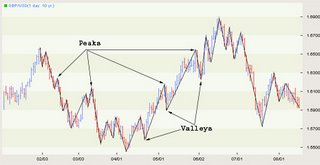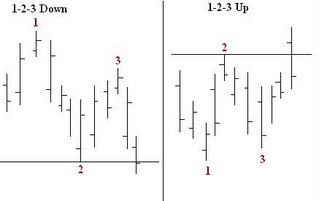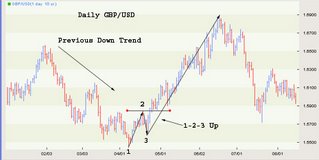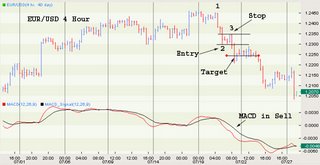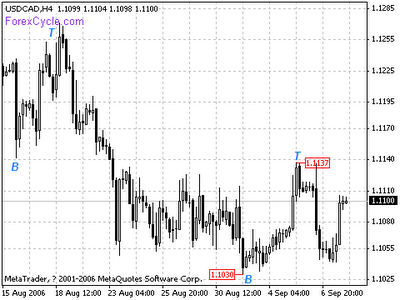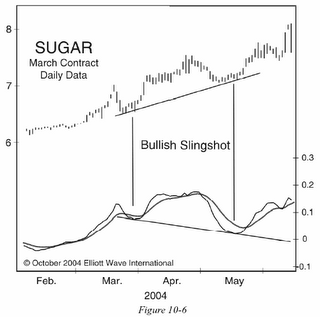Everybody hates to lose and unfortunately no one is blessed with the ability of foresight, therefore losses are an unavoidable part of trading. When we enter a trade we will either be right, or wrong, and even if we broke-even we'd still be classed as being wrong - as nobody enters into a trade just to break-even! When unsuccessful traders encounter a string of losses they begin to engage in self-destructive patterns that help them escape the pain they are experiencing.
Bring to light these self-destructive actions that can help you realize what you are doing before it takes hold of your physical health. If you find yourself already engaged in these patterns hopefully this article can help you to get you back on track as quickly as possible.
What are the destructive patterns?
If you find yourself caught in a string of losses or a bad performing week/month be sure to monitor your behavior. It is during this time that you will be at your most vulnerable. You will begin to indulge in activities that at first seem harmless, but upon excessive use (or in time), begin to cause physical damage to your health.
Ask yourself the following question: during drawdown periods do I find myself over-indulging in these activities:
Food (especially junk food - e.g. chocolate, ice-cream, chips)?
Sex (includes viewing pornography)?
Alcohol?
Drugs (includes excessive smoking)?
Laziness (find it difficult to wake up in the morning)?
Entertainment?
All of the above taken in excessive doses can be detrimental to your own physical health (some even in small doses!).
These activities above during your losing period are only covering up the pain of confronting the true issue, and your body tries to rid the emotional pain by trying to "fix" it with physical pleasures. Unfortunately it is going about it in the wrong way, so what should you do?
Firstly... REALIZE WHAT YOU ARE DOING AND STOP IT!
You need to realize what you're doing and you need to STOP doing it immediately! You can either decide to stop, or you'll be forced to stop when your body eventually breaks down and prevents you from any form of movement. It will be much more beneficial to you in the long-term if you can decide to stop *NOW*.
Once you have stopped you now need to figure out a way to solve the pain - not by cutting out or neglecting it, but by staring it in the face. Bring your problems out into the light, be honest with yourself. There can be no growth without pain; you are experiencing the emotional pain, now it is time to find the error and therefore your growth.
Begin Your Review
The review process begins in two separate areas: You & Your System. Here are some checklists for you to go through to find out where the problem could lie:
"YOUR SYSTEM" CHECKLIST
Was your system thoroughly tested prior to trading it (or paper traded if you do not have the capacity to program your system into back testing software)?
Did you test with out-of-sample data?
Do you even have a system???? If you do not, how do you even know if the method that you are trading is even profitable??
Is your system's code correct?
Did you over-optimize your system? (What have we discussed about over-indulging?)
Did you paper trade your system prior to placing capital on it?
Did you trade with a small amount of capital prior to placing the rest of your funds on it?
Do you know the system's limitations?
Did you properly drill your system? (See our blog article on why I am the system designer from hell)
"YOU" CHECKLIST
Is the current drawdown you are exhibiting with your system normal?
Are you comfortable with your system's historical drawdown performance?
Are you fully aware of the risks involved with your system and the instrument(s) you are trading?
Are you trading with funds that you are comfortable risking?
Are you relying too heavily on your performance?
Have you set realistic goals?
As you can see there are generally two areas that you need to explore: the mechanical aspect - your system - and the emotional aspect - you. Both can be responsible for making the way you feel the way you do. It will either be an error on the system's side with how the system was tested and/or programmed, or it can be your own psychological profile not being comfortable with the system's performance.
Your Answers = Change = Your Growth
What steps should we now take? Now that we have begun a corrective process where we have stopped the evil nature of our over-indulging ways to take control we should continue our "corrective nature" by invoking our findings and taking ACTION in correcting our errors.
If the problem was mechanical - fix it, if the problem was emotional either go about setting up new thought patterns, or change your current system. The answers lie in whether you need to expand your knowledge in system development, or whether you need to grow emotionally as a person.
Unfortunately there is no easy road, and even if there was everybody would be doing it. Hopefully this article has made you ponder over some of your behaviors during drawdown periods, be sure to keep an eye on yourself and as always take care of your body, because there's no use in making all the money in the world when you don't have the physical capacity to enjoy it
Article Source: kokkada.com
See also:How To Use MACDEasy-Forex? The best trading platform available today.Forex Trading ExplainedInstitutional Forex SystemThe MasterTrader eBookForex Profits
